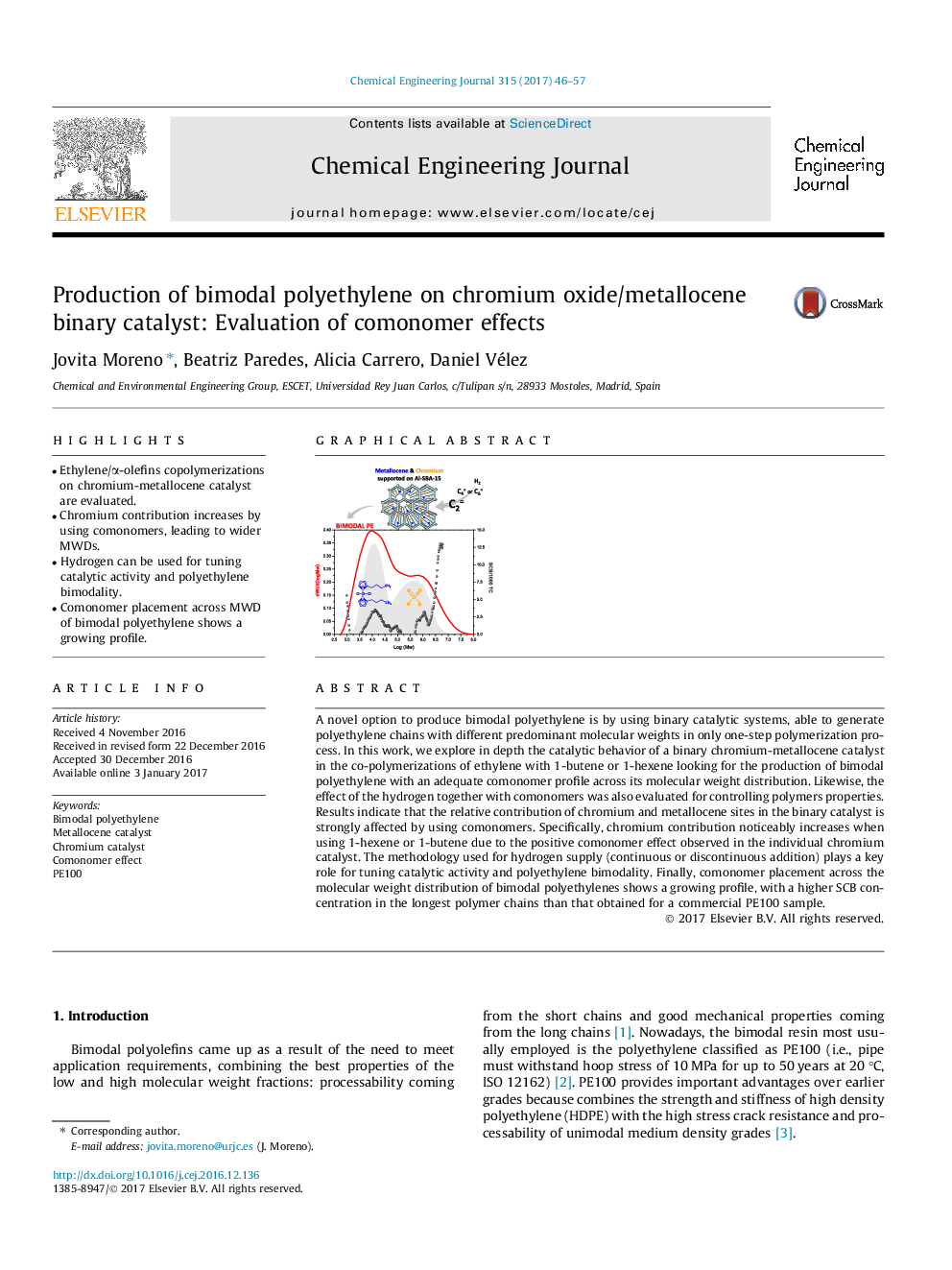| Article ID | Journal | Published Year | Pages | File Type |
|---|---|---|---|---|
| 6466376 | Chemical Engineering Journal | 2017 | 12 Pages |
â¢Ethylene/α-olefins copolymerizations on chromium-metallocene catalyst are evaluated.â¢Chromium contribution increases by using comonomers, leading to wider MWDs.â¢Hydrogen can be used for tuning catalytic activity and polyethylene bimodality.â¢Comonomer placement across MWD of bimodal polyethylene shows a growing profile.
A novel option to produce bimodal polyethylene is by using binary catalytic systems, able to generate polyethylene chains with different predominant molecular weights in only one-step polymerization process. In this work, we explore in depth the catalytic behavior of a binary chromium-metallocene catalyst in the co-polymerizations of ethylene with 1-butene or 1-hexene looking for the production of bimodal polyethylene with an adequate comonomer profile across its molecular weight distribution. Likewise, the effect of the hydrogen together with comonomers was also evaluated for controlling polymers properties. Results indicate that the relative contribution of chromium and metallocene sites in the binary catalyst is strongly affected by using comonomers. Specifically, chromium contribution noticeably increases when using 1-hexene or 1-butene due to the positive comonomer effect observed in the individual chromium catalyst. The methodology used for hydrogen supply (continuous or discontinuous addition) plays a key role for tuning catalytic activity and polyethylene bimodality. Finally, comonomer placement across the molecular weight distribution of bimodal polyethylenes shows a growing profile, with a higher SCB concentration in the longest polymer chains than that obtained for a commercial PE100 sample.
Graphical abstractDownload high-res image (138KB)Download full-size image
